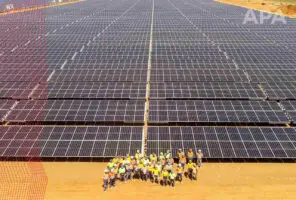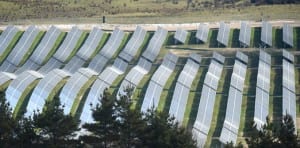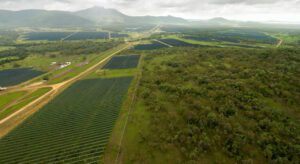Tasmania’s major gas power generator – the 208MW Combined Cycle Gas Turbine at the Tamar Valley Power Station – has been switched back to standby, with the state’s replenished dams now supplying more hydropower than is needed.

After a nearly five-month long electricity crisis caused by severely depleted hydro resources and the failure of the Basslink interconnector, Tasmania returned to 100 per cent renewable electricity just last week, operating without gas-fired or diesel generation for the first time since the beginning of the year.
That was broken a few days later, when gas was switched back on, but the energy supplier says there is now enough water in the dams to put the gas generator – which had been mothballed and partially dismantled last year – back on to standby.
HydroTasmania chief Steve Davy said that after the driest spring on record, which caused dam levels to fall to record lows, May is now shaping up to be the wettest on record.
Because of this the Tamar Valley gas turbine could be moved to standby mode effective immediately, a setting from which it could be restarted within a fortnight if required.
The return to full hydropower capacity will also see two of the state’s biggest industrial power users – Bell Bay Aluminium and TEMCO – resume full production several weeks earlier than expected.
In February, Bell Bay Aluminium voluntarily reduced its electricity consumption in response to the state’s severely constrained power supply. 
But HydroTas said the company, which along with TEMCO employs more than 700 Tasmanians, can now resume full output within five weeks – a full month earlier than expected. TEMCO will resume full production within four weeks.
“This month is on track to be the wettest May on record in terms of inflows into Hydro storages,” Davy said.
“As of 15 May, inflows were already 150 per cent of the long-term average for the whole month. After extremely dry weather from September to April, that’s very welcome news.
“It has allowed us to reach an agreement for Bell Bay Aluminium and TEMCO to resume full production several weeks ahead of schedule, which is very important for Tasmanian jobs and the local economy.
“The increased demand will be met by hydropower, and help reduce the likelihood of spilling and wasting precious water in our smaller storages.
“Achieving a storage level of 20 per cent and getting our major customers back to full production are important steps in recovering from the current energy challenge,” Davy said.
But he also warned that there was still “much work ahead” – some of which, presumably, will revolve around insuring the crisis isn’t repeated – and “no room for complacency.”








